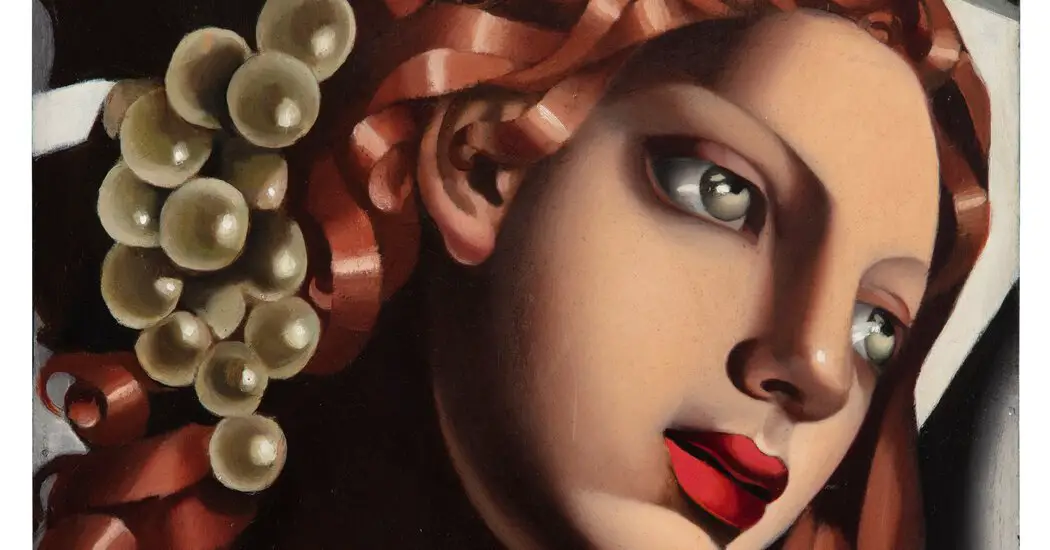Madonna clearly was onto something when, in the late 1980s, she began collecting the artworks of Tamara de Lempicka, a Polish, Art Deco-era painter known at the height of her fame for her portraits of a louche, and often elite, Parisian society.
Lempicka, whose celebrity crested in the years between the two world wars, left Paris for Beverly Hills, Calif., in 1939. In her prime, the artist liked to portray herself as a self-infatuated femme fatale, projecting the kind of icy hauteur that is often a magnet for fashion tribes.
By the time she died in 1980, Lempicka’s reputation had been eclipsed by a generation of younger artists, her work dismissed as overwrought and out of tune with the times. But in the decades since, interest in the artist has risen thanks in part to enthusiastic collectors like Barbra Streisand; Jack Nicholson; the fashion designers Donna Karan and Wolfgang Joop; and pop music’s Material Girl.
Lempicka’s highly mannered, hyper-glamorized, and erotically charged portraiture is the subject of “The Wold of Tamara: A Celebration of Lempicka and Art Deco,” a new exhibition and sale at Sotheby’s in New York on view through April 18. It includes works like “Nu aux buildings,” which depicts a nude woman with a pale textile draped over the lower half of her body, and “La Polonaise,” a portrait of a woman whose hair is covered by a vibrant floral-print veil.
The Sotheby’s exhibition has been timed to coincide with the Broadway opening of “Lempicka,” a biographical musical, on April 14, which, along with the exhibition, is a sort of curtain raiser for the first American retrospective of the artist’s work opening this fall at the Fine Arts Museums of San Francisco.
Nick Deimel, a vice president and head of private sales at Sotheby’s, said Lempicka “was not only an artist, but a self-determined woman, a mother, a wife and a lover to a number of women and men.” She was also a fashion aficionado given to draping herself in satins and silks.
“Lempicka crafted her own image,” Mr. Deimel said, “much in the ways people do on social media today.” (Or, much like Madonna Louise Ciccone did as she became a pop star.)
“That’s one reason she resonated so much with the next generations of fashion designers and other creative people,” he said.
Moore Luxury in Miami
The Moore Furniture Building in Miami, another Art Deco icon, was built in the 1920s on a former pineapple farm in what is now part of that city’s Design District. In its early days, the building was occupied by — you guessed it — a furniture business; in recent years, as the Design District has flourished, the building has been used for art shows and as the temporary home of the Institute of Contemporary Art, Miami.
Soon the structure, which has been designated as a historical site in Florida and is owned by the Miami developer Craig Robins, will begin a new chapter as a hotel and a private club. The Moore’s glow-up, overseen by WoodHouse, a Dallas developer of social clubs and entertainment spaces, also included the addition of a new lobby restaurant, Elastika, which shares its name with the monumental sculpture by Zaha Hadid installed in the building’s cavernous atrium. (A representative for the Moore declined to disclose the cost of its latest transformation.)
Its private club is meant to be a grown-up variation on Soho Beach House Miami, and is just blocks away from ZZ’s Club, a private dining club opened in 2021 by the group behind the restaurant Carbone.
Membership, according to promotional copy, will comprise a “carefully selected community of global leaders, innovators and tastemakers.” Such types on a list of founding members include the fashion designer Francisco Costa; the model Karolina Kurkova; the beauty entrepreneur Barbara Sturm; and the jewelry designer and actor Waris Ahluwalia.

